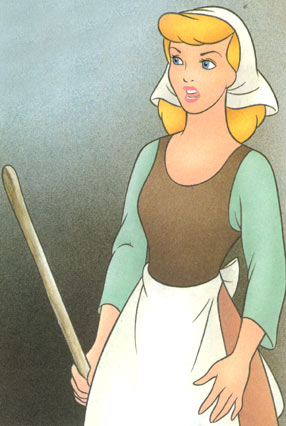
Fairy tales are a way for literature to uphold the patriarchal conventions of society. These “harmless” stories are presented to children at a young age, which then establish the normality of the domination of men in their minds. Social conventions are instituted to children through fairy tale characters that they can relate to in order to embed the “proper” gender behaviors in their brains. “American literature is male. To read the canon of what is currently considered classic American literature is perforce to identify as male” (Fetterley), but fairy tales come before school years, therefore it is necessary to have main female characters. Little girls must learn their place in society before they start their education, because then they will be less likely to question tradition if it has been presented to them so early on. If girls identify with characters like Cinderella, then they will not need female literature in canon, since they already have their gender identification set up. Cinderella is the perfect example of a beautiful, quiet, nurturing, and subordinate woman that little girls relate to.
Cinderella is the image of the ideal angelic female, while the stepmother and stepsisters represent the opposite “monster” images (Gilbert and Gubar 812). Starting with the physical appearance, Cinderella is beautiful and the others are dark and unattractive. Cinderella has a magical connection with the animals, which reinforces the deep connection to nature that a proper woman should have. That quality also reveals her nurturing nature, because she clothes, feeds, and defends the living creatures she has such a close bond to. Those actions mirror what kind of mother, wife, and caretaker she would make in the future. The stepmother is the scheming, outspoken, dominant, and essentially evil character that forces Cinderella into servitude in her own house. The evil stepmother represents “the subversive feminine symbols (witches, evil eye)” (Gilbert and Gubar 814). Cinderella, on the other hand, follows the “conduct books for ladies [that] proliferated, enjoining young girls to submissiveness, modesty selflessness; reminding all women that they should be angelic” (Gilbet and Gubar 816). Regardless of how badly the stepmother treated Cinderella, she went on doing her household duties and taking care of the whole family, which justifies the idea that “a woman of right feeling should devote herself to the good of others” (Gilbert and Gubar 816). Cinderella falls in love with the handsome prince, who will complete her life, and in the end with the help of her animal friends and her goodness she wins the day. Cinderella’s triumph over the wicked stepmother and stepsisters, displays to the audience that her female qualities are the ones to be repeated and grained into the unconscious. The “angel” female defeats the “monster” and in a fairy tale always has a happy ending, which send the wrong sense of reality to the young girl identifying with that innocent, holy character.
“For every glowing portrait of submissive women enshrined in domesticity, there exists an equally important negative image that embodies the sacrilegious fiendishness” (Gilbert and Gubar 819) of the monster. Cinderella is a fairy tale that underlines the patriarchal gender roles, and makes the woman with a dominant personality to be the villain. Cinderella “a sweet heroine inside the house… is opposed to a vicious [monster] outside” (Gilbert and Gubar 819), which is the stepmother. Little girls who identify with Cinderella will wait for their prince charming to fulfill their life and accept subordination and domesticity as their nature role.
Works Cited
Gilbert, Sandra, and Susan Gubar. Literary Theory: An Anthology. Ed. Julie Rivkin and Michael
Ryan. 2nd ed. Malden: Blackwell, 2004. pg. 812-825 and Ch.3 "On the Politics of
Literature" by Judith Fetterley
